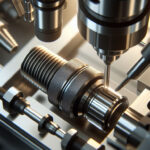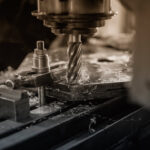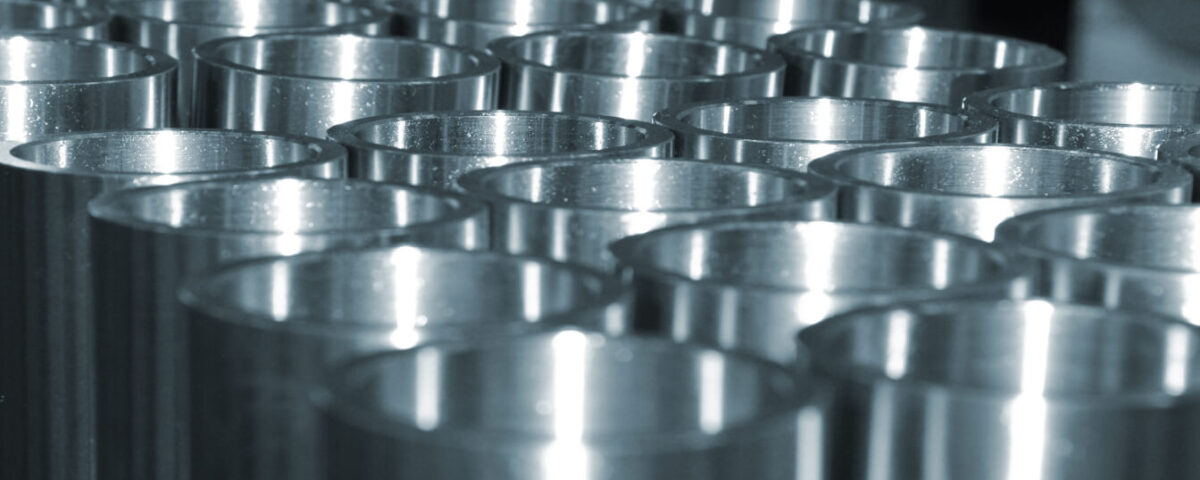
Exploring Seven Key Techniques in Thread Processing
14 November 2024
CNC Turning: Past, Present, and Future
20 November 2024Die casting is a basic manufacturing technique that enables the very precise mass manufacture of intricate, superior products. One important consideration that has a direct bearing on the final product's functionality, robustness, and affordability is the material selection. Choosing the ideal material for your die casting project involves careful study because there are many different alloys available, each with unique benefits and drawbacks. The characteristics of popular materials, the elements to take into account, and how to match them to certain applications will all be covered in this article.
This article delves into the essential factors to consider when selecting materials, explores the most commonly used die casting alloys, and provides insights into matching materials with applications to ensure superior results.
Key Factors to Consider When Choosing Materials
Selecting the right material for die casting involves balancing multiple considerations to meet both technical and budgetary requirements. Here are some essential factors to evaluate:
- Strength and Durability: Throughout its existence, the material must be able to endure the mechanical forces, wear, and environmental conditions it will encounter. For example, high tensile strength materials are needed for automotive components.
- Thermal and Electrical Conductivity: Materials with superior thermal and electrical conductivity, such copper alloys or aluminum, are frequently used for applications like electronics or HVAC systems.
- Corrosion Resistance: Materials like aluminum that are resistant to corrosion are advantageous for parts that are subjected to moisture or severe environmental conditions, such as maritime equipment.
-
Weight considerations: To improve fuel economy and lower total weight, sectors like aerospace and automotive give priority to lightweight materials like magnesium.
-
Machinability and Surface Finish: The final product's visual attractiveness and production costs are greatly influenced by how easily the material can be molded, machined, and finished.
-
Cost Efficiency: To guarantee that the project stays financially feasible without sacrificing quality, it is crucial to strike a balance between the performance criteria and financial limitations.
- Environmental Impact: Sustainability is becoming a significant factor in material selection. Recyclable metals like aluminum and zinc align with eco-conscious manufacturing practices.
By thoroughly assessing these factors, you can narrow down material choices to those that align with your project’s specific demands.
Common Die Casting Materials and Their Properties
Every material used in die casting has certain qualities that make it appropriate for particular uses. An outline of the most widely used materials is provided below:
1. Alloys of aluminum
The most popular material for die casting is aluminum, which is valued for its ability to withstand corrosion and be lightweight. It is perfect for electronics and automotive components due to its high electrical and thermal conductivity.
- Advantages: Aluminum is lightweight, recyclable, and maintains strength over a wide temperature range. It also offers excellent resistance to corrosion, making it suitable for outdoor applications.
- Drawbacks: Compared to zinc, aluminum is less ductile and may have lower impact resistance.
2. Alloys of Zinc
Zinc is unique in that it can create extremely exact and detailed parts, which makes it perfect for small, complex designs. Excellent surface finishes are guaranteed by its inherent lubricity, which frequently eliminates the need for post-processing.
- Advantages: Zinc is strong, durable, and highly malleable, enabling the casting of complex shapes. It is also cost-effective for high-volume production.
- Drawbacks: It is heavier than aluminum and may corrode over time without proper coating.
3. Alloys of Magnesium
Magnesium, the lightest structural metal, is becoming more and more well-liked in sectors like consumer electronics and aerospace that need lightweight components.
- Advantages: Magnesium is very machinable and has a great strength-to-weight ratio.
- Drawbacks: Magnesium needs protective coatings for long-term durability because it corrodes more easily than aluminum.
4. Copper Alloys
Copper excels in applications requiring exceptional electrical and thermal conductivity. It is often used in electrical components, plumbing fittings, and industrial machinery.
- Advantages: Copper is highly durable and resistant to corrosion, with unmatched thermal and electrical properties.
- Drawbacks: It is heavier and more expensive than other alloys, making it less common for large-scale projects.
5. Lead and Tin Alloys
Although their use has declined due to environmental concerns, lead and tin alloys are still employed in specialized industries, particularly where high density or corrosion resistance is required.
- Advantages: These materials are dense and resistant to harsh environments, making them suitable for niche applications.
- Drawbacks: Lead poses environmental and health risks, limiting its use in modern manufacturing.
Applications of Die Casting Materials
Optimal performance is ensured by matching the material to the particular application. Here are some examples of how various materials are applied in various industries:
- Automotive: The automotive industry is dominated by magnesium and aluminum alloys because of their durability and light weight. These materials are frequently utilized for structural elements, engine blocks, and transmission cases.
- Electronics and Telecommunications: Due to their superior conductivity, copper and aluminum are used in heat sinks, connectors, and housings.
- Aerospace: The aerospace industry favors magnesium alloys because of their lightweight nature, which helps airplanes use less fuel and weigh less overall.
- Industrial Equipment: Because of their strength and capacity to support complex designs, zinc alloys are frequently utilized for precision components such as gears, brackets, and housings.
Every business makes use of die casting materials' special qualities to satisfy its own needs.
Die Casting Material Testing and Validation
Thorough testing of the chosen die casting material is essential before committing to mass production. Material testing ensures that the material satisfies all necessary performance criteria and helps evaluate its suitability for the particular application. The main steps in material testing are as follows:
- Mechanical Testing: By evaluating the material's strength, hardness, and elasticity under varied circumstances, one may model how the finished product will function in practical settings. The mechanical qualities of the material are frequently assessed using tensile strength, impact resistance, and fatigue testing.
- Thermal Testing: Materials that can tolerate high temperatures may be needed for some applications. By evaluating the material's performance at both high and low temperatures, thermal testing makes sure that it won't distort, weaken, or break under these circumstances.
- Corrosion Testing: Resistance to corrosion is essential for components exposed to damp or harsh chemicals. The ability of materials to endure acids, seawater, and other corrosive substances without degrading over time is examined.
-
Dimensional Stability: Dimensional stability testing is necessary to guarantee that items are built to exact tolerances. The material's capacity to maintain its shape under external force and during casting is evaluated by this testing.
-
Evaluation of Surface Finish: Surface finish testing assesses a material's capacity to provide the intended appearance, whether polishing, coating, or painting is necessary. It is a crucial factor for both functional and aesthetic reasons.
-
Fatigue and Lifecycle Testing: This kind of testing evaluates a material's durability over time by simulating prolonged use and exposing it to repeated loads. It's especially crucial for components like automotive parts that will be subjected to continuous stress or vibration.
- Prototyping and Iterative Testing:
Once the material passes initial tests, prototypes are created for additional evaluation. Iterative testing during the prototyping phase ensures any issues can be identified and corrected before moving on to large-scale production.
Manufacturers can lower the risk of failures and guarantee long-term performance by carrying out thorough testing and validation to ensure that the material selected for the die casting process will satisfy all functional, mechanical, and aesthetic requirements.
Tips for Selecting the Best Material
Use these pointers to make sure your die casting project is successful:
- Collaborate with Professionals: Work together with experts in die casting to assess the needs of your project and suggest the finest materials.
- Testing Prototypes: Testing prototypes can assist determine possible changes and assess how well materials work in real-world scenarios.
- Think About Post-Processing Requirements: To improve durability or appearance, some materials need further treatments like powder coating or anodizing. Make sure the content you've selected facilitates these procedures.
- Set priorities: Sustainability To lessen your impact on the environment and to support green manufacturing initiatives, choose recyclable materials like zinc and aluminum.
You can make sure that the materials you choose meet sustainability objectives and technical specifications by following these procedures.
Conclusion
For die casting projects, selecting the appropriate material is essential to producing results that are long-lasting, high-quality, and reasonably priced. From copper and magnesium to zinc and aluminum, each substance has unique qualities that suit particular uses and sectors. You can choose the ideal material to satisfy the requirements of your project by carefully weighing variables like conductivity, strength, weight, and cost.
Working with professionals and taking advantage of die casting materials' special benefits will guarantee a successful outcome whether you're manufacturing industrial parts, consumer electronics, or automotive components. With the correct material, embrace die casting's potential and realize your creative ideas.




